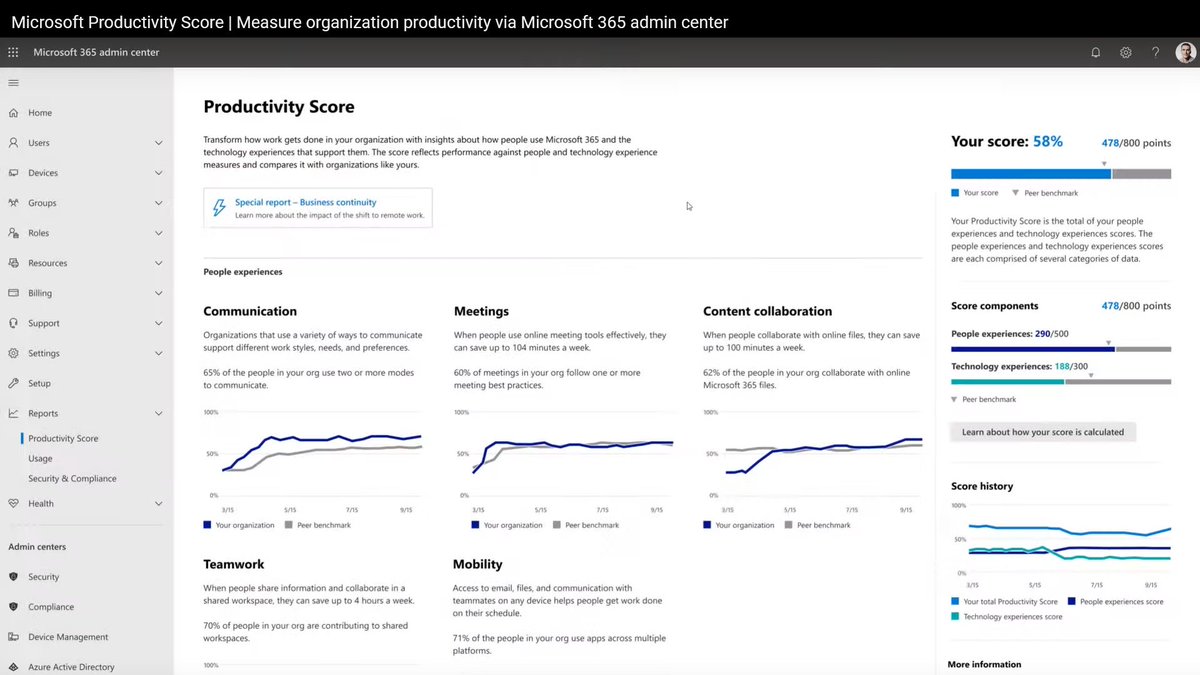Microsoft Criticised For ‘Workplace Surveillance’ Feature

Microsoft 365 Productivity Score feature, introduced last month, criticised for analysing ‘extensive data’ on individual employees’ activities
Microsoft has been criticised for adding what one critic called a “full-fledged workplace surveillance tool” into its Microsoft 365 bundle, in the form of a new Productivity Score feature.
The feature was released in October, following a May preview, as a way for companies to evaluate the progress of digital transformation programmes during the pandemic, which has brought in far higher levels of remote working and other changes in how technology is used.
The tool aggregates information about areas such as email use and network connectivity into an overall office productivity percentage figure.
But by default, it also allows managers to access data on individual staff and their levels of participating in group chats, sending emails or collaborating on shared documents.

Privacy concerns
“This is so problematic at many levels,” said Wolfie Christl, a researcher with Austria-based digital rights group Cracked Labs, on Twitter.
Christl said such metrics aimed at “analysing extensive data about employee activities” had formerly been restricted to “fringe software vendors”, and not tech giants such as Microsoft.
The feature “turns Microsoft 365 into an full-fledged workplace surveillance tool”, he said.
He added that Microsoft can now define “highly arbitrary metrics” that that may “potentially affect the daily lives of millions of employees and even shape how organisations function”.
In a blog post announcing the feature’s general availability last month, Jared Spataro, Microsoft corporate vice president for Microsoft 365, emphasised that Productivity Score is “not a work monitoring tool”.
“Let me be clear: Productivity Score is about discovering new ways of working, providing your people with great collaboration and technology experiences,” he wrote.
‘Actionable insights’
“It focuses on actionable insights about the ways in which people and teams are using the tools so you can make improvements or provide training to further your digital transformation.”
He said Microsoft is “committed to privacy as a fundamental element” of the tool.
In a statement provided to The Guardian, Microsoft said the tool is an “opt-in experience” giving IT administrators insights into technology and infrastructure usage.
“Insights are intended to help organisations make the most of their technology investments by addressing common pain points like long boot times, inefficient document collaboration, or poor network connectivity,” Microsoft said.
It added that the data are shown in aggregate over a 28-day period and are provided at the user level for technical support purposes.
While the tool may be opt-in for administrators, once it’s activated it shows data on individuals by default – although this element can be turned off, Christl noted.
“This normalises extensive workplace surveillance in a way not seen before,” he commented.
He added that the tool may be illegal in many EU countries due to privacy legislation. “I’m sure (employers) cannot legally use it in Austria and Germany,” Christl wrote on Twitter.